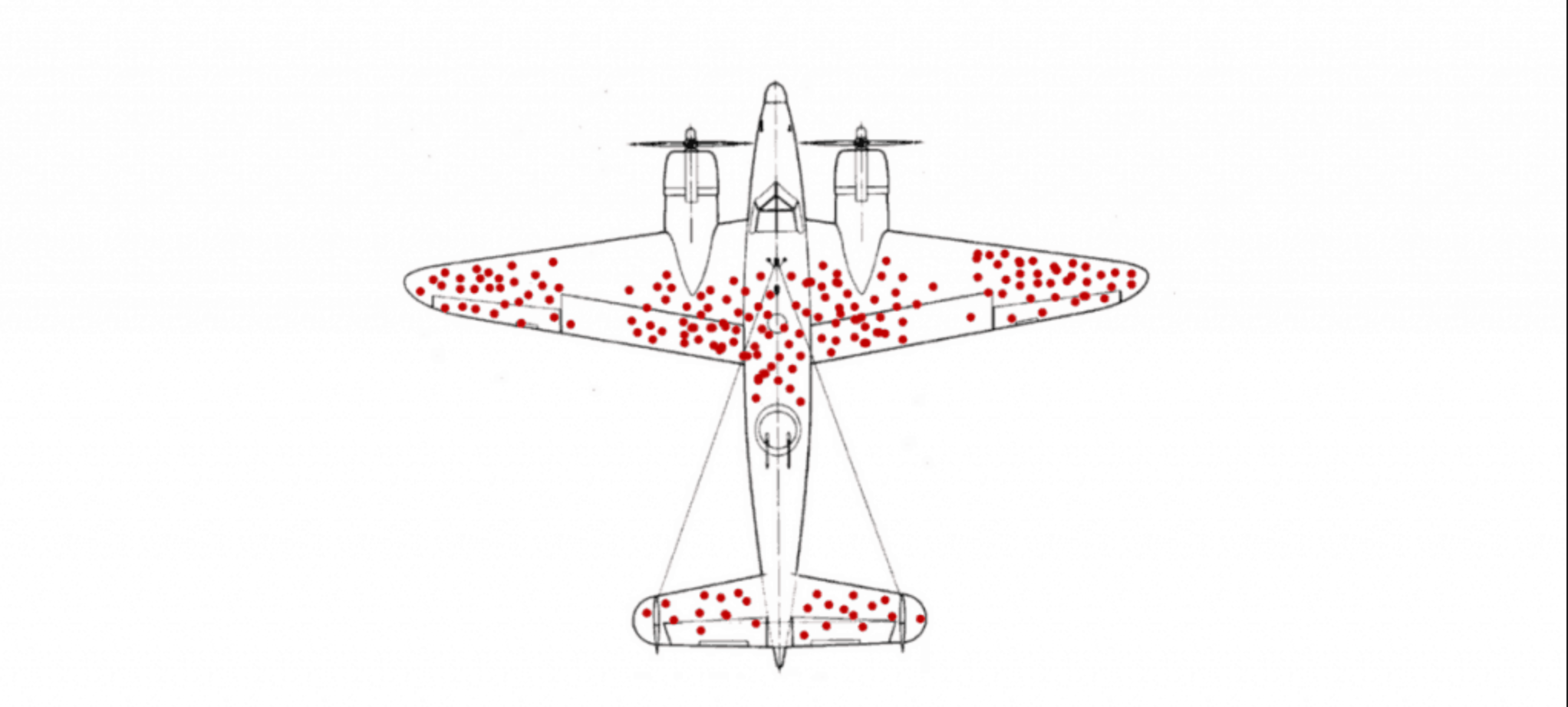Fighter aircrafts returning after missions during World War II are often cited as an early and well-known example of survivorship bias. The military planned to fortify the plane by installing armour there. Armour, however, would be too heavy to be placed everywhere.

The returning planes were examined for bullet holes to determine the number of successful survivors. As a first line of defence, the military looked to fortify the areas that had taken the most damage. That seems reasonable. Mathematician Abraham Wald, however, recognised the presence of survivorship bias.
The returning aircraft were hit in the same places as those previously noted. As a result, fortifying these areas isn’t a high priority. Instead, it is essential to extrapolate the missing information regarding the impact points of the planes that did not return. Wald understood they needed to fortify those areas with unharmed planes returning to them. Obviously, those planes never made it back after being shot down.
This type of bias, known as survivorship bias, can have significant consequences in the field of business. By only focusing on the success stories of startups, students studying entrepreneurship may miss out on valuable lessons that can be learned from failed ventures. Understanding why certain startups failed can provide valuable insights into how to avoid making similar mistakes in the future.
Additionally, by only studying successful startups, students may develop an unrealistic view of what it takes to succeed in the business world. It is important for researchers and educators to acknowledge and address this bias by including a more diverse range of case studies in their curriculum. By doing so, they can help prepare future entrepreneurs for the challenges and realities of starting a business.